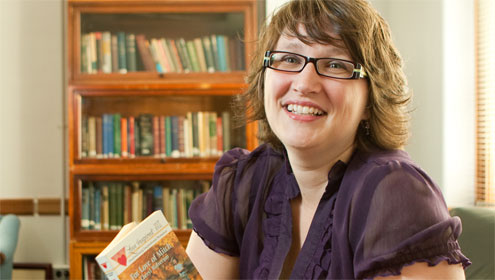
Nearly 75 million people read a romance novel in 2008, 90 percent of them women. Harlequin, the largest publisher of romance novels, publishes 120 titles a month in 25 languages.
Scholars have recently started to examine this popular, but much maligned genre, and how it reflects the changing roles of women in society.
“Romance novels confirm that women are socialized to expect and find fulfillment in marriage. But, they also provide insight into how views on romance, gender and sexuality have changed and continue to change over time,” says Lynn Neal, an assistant professor of religion who researches Christian romance novels. “In the 1970s, romance novels tended to feature dominant and aggressive heroes coupled with weak, subservient heroines. In more recent years, relationships in these novels have become more egalitarian.”
Research in romance fiction also reveals information about women as both consumers and producers of consumer culture. Neal says that warnings against romance novels date as far back as 1566. In American culture, fiction, especially women’s fiction, has long been seen as a corruptive and dangerous force.
In the 19th century, women were thought to be susceptible to the powers of fiction and were urged not to read it — but read it they did. “Our culture’s deeply entrenched stereotype of romance novels and their readers reflect a deep-seated anxiety about the relationship between women and sexuality and how women use their leisure time,” says Neal, the author of “Romancing God: Evangelical Women and Inspirational Fiction.”
Students in Neal’s first-year seminar read both a Christian and a mainstream romance novel and are forced to evaluate and assess the power of stereotypes about romantic fiction, and about those who read it.
“Students purchase a romance novel to read and this experience acquaints them very quickly with the stereotype’s power,” she says. “Reading this genre also makes students consider more fully how gender socialization influences our relationship with and opinion of certain types of literature.”
Headlines
Wake Forest in the News
Wake Forest regularly appears in media outlets around the world.




